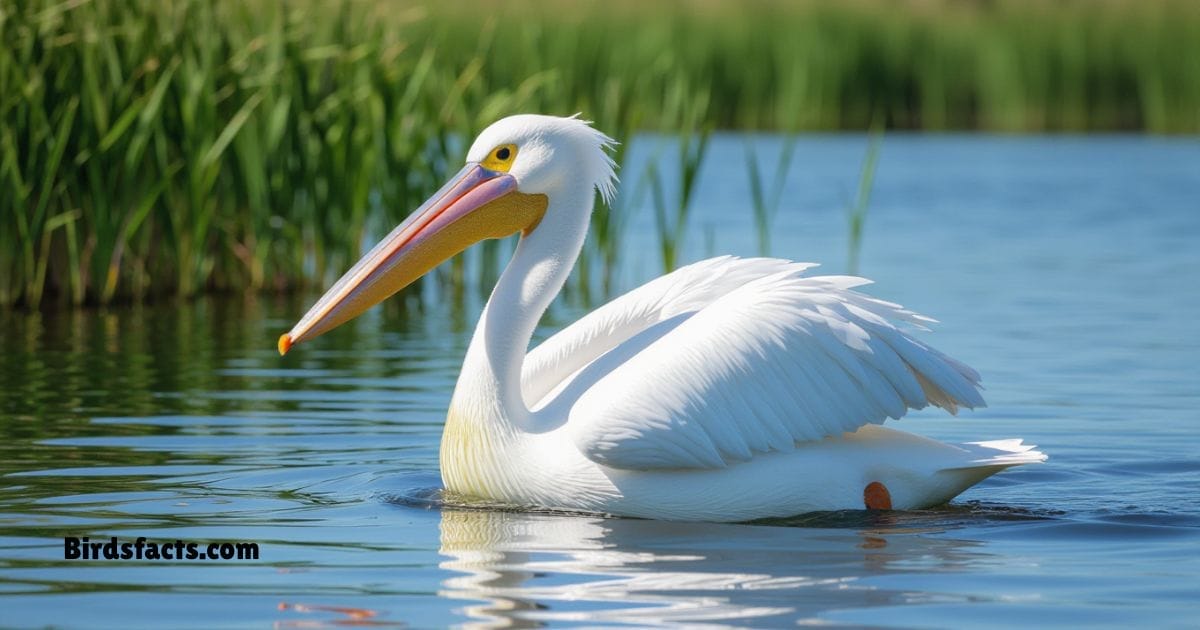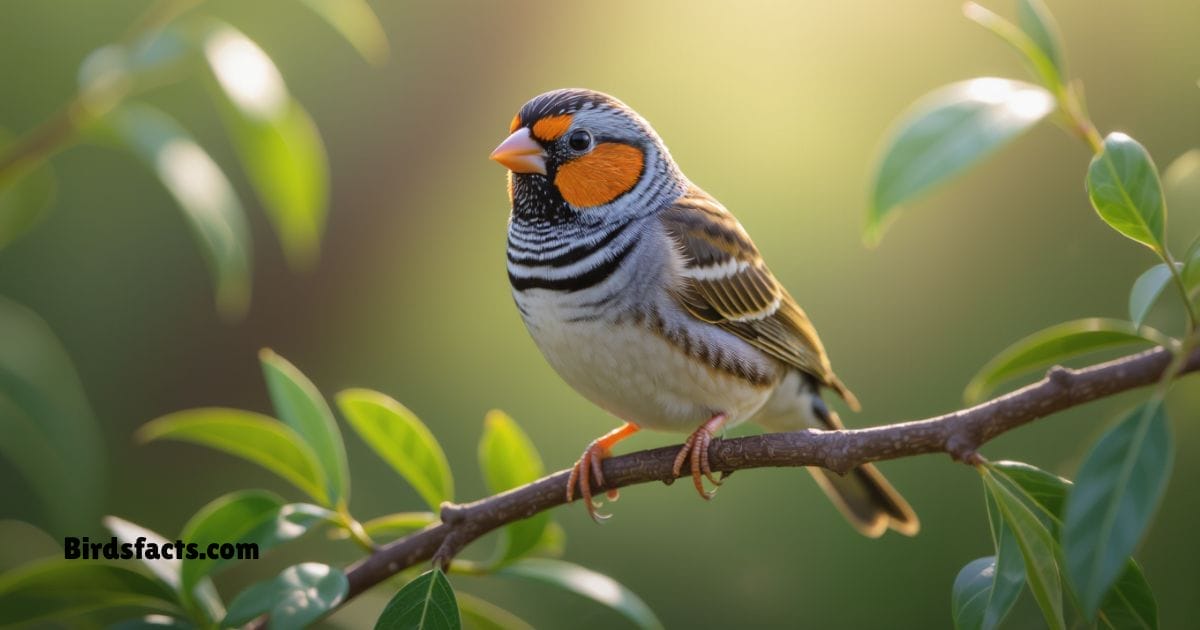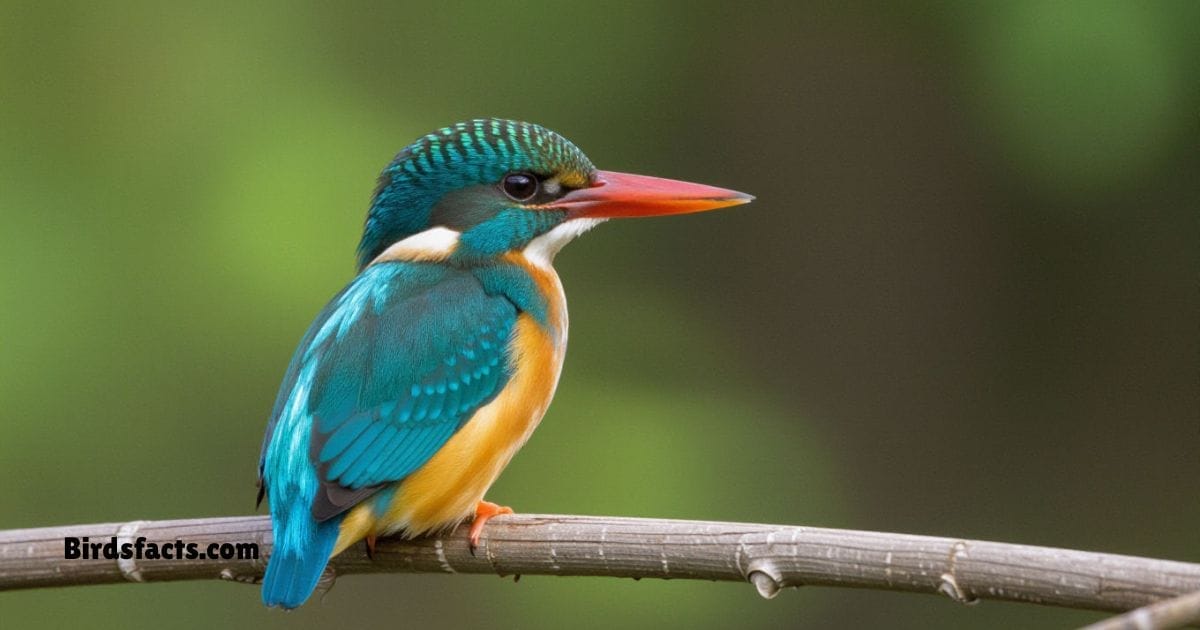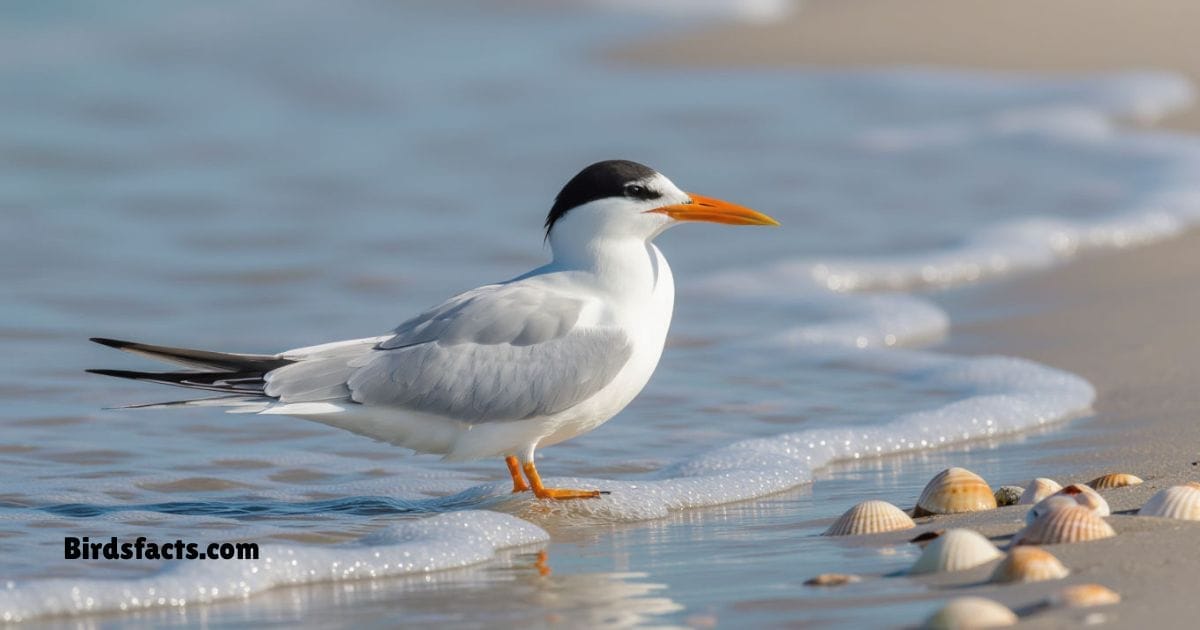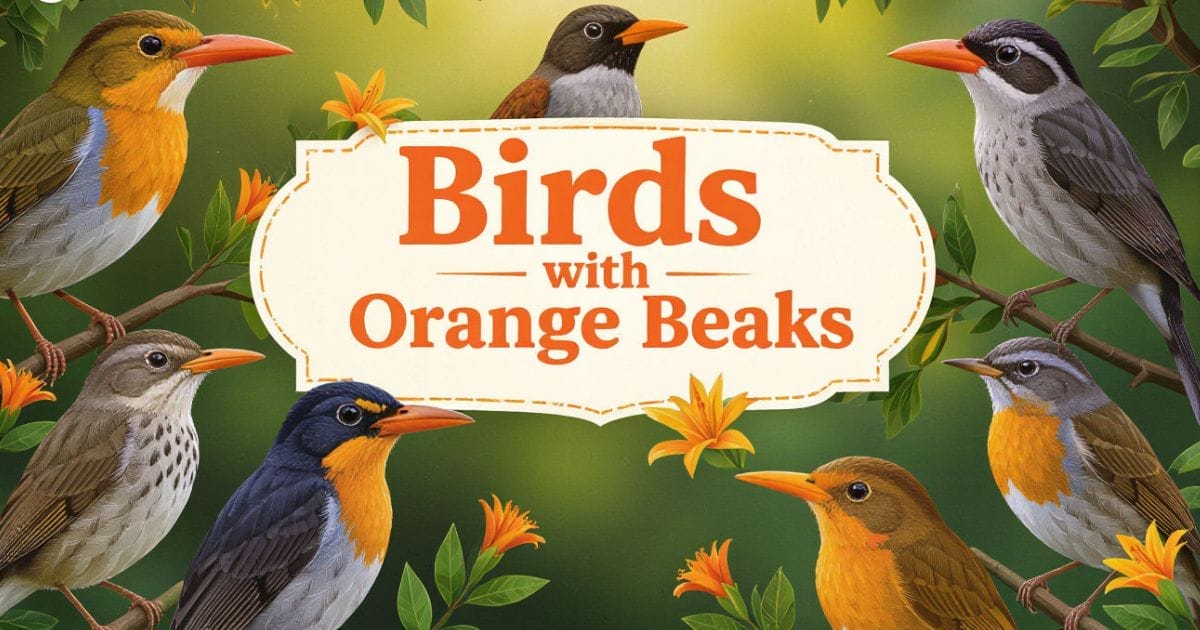
Beautiful Birds With Orange Beaks from Around the World
Sometimes When You’re Out In Nature Or Scrolling Through Bird Photos Online You Spot A Striking Bird With A Bright Orange Beak and It Sticks In Your Mind. You Can’t Help But Wonder “what Bird Is That?” But When You Try To Search For It You Realize You Don’t Even Know Where To Start. It’s A Little Frustrating When Such A Beautiful Detail Catches Your Eye Yet The Mystery Remains Unsolved.
That’s Exactly What This Guide On Birds With Orange Beak Is Here To Help With We’ll Explore Some Of The Most Fascinating Species From Around The World Highlight Their Unique Features And Share Tips On Where You Might Spot Them Whether You’re A Casual Birdwatcher Or Just Curious You’ll Find The Answers You’ve Been Looking For plus A Few Surprises Along The Way.
Birds With Orange Beaks
- Alpine Chough
- American White Pelican
- Australian Zebra Finch
- Atlantic Puffin
- African Skimmer
- American Oystercatcher
- Black Oystercatcher
- Crested Auklet
- Common Blackbird with Yellow Beak
- Common Myna
- European Starling
- Greylag Goose
- Grey-Headed Gull
- Hill Myna
- Hornbill
- Mute Swan
- Malachite Kingfisher
- Northern Cardinal
- Orange-Billed Sparrow
- Oriental Dwarf Kingfisher
- Puffin (generic)
- Pelican (generic)g)
- Royal Tern
- Toco Toucan
- Variable Oystercatcher
- Yellow-billed Chough
- Zebra Finch
Alpine Chough

The Alpine Chough Is Easy To Spot Bouncing Around Craggy European Peaks While Its Glossy Black Plumage Blends Into Mountain Shadows The Bright Orange yellow Bill Catches The Sunlight As These Birds Call Out Over Windy Valleys Often Seen Swooping Between Rocky Ledges They’re A Highlight For Anyone Trekking Through The Alps Or Pyrenees. Their Uniquely Curved Bills Help Them Probe Into Cracks For Insects And Seeds a Handy Adaptation For Life Above The Tree Line.
During Winter These Skilled Fliers Migrate Lower In Search Of Food, Sometimes Joining Flocks Of Their Yellow-billed Cousins. Alpine Choughs Nest In Secluded Cliff Crevices Their Charismatic Calls Echoing Across Snowy Landscapes. They Symbolize The Wild Spirit Of High Mountains And Delight Hikers Lucky Enough To Glimpse Their Beaks Flashing Like Little Torches In The Cold Air.
American White Pelican

The American White Pelican Is A Showstopper On Lakes And Marshes Across North America. With A Wingspan Stretching Up To Nine Feet These Majestic Birds Are Impossible To Overlook. But What Truly Sets Them Apart Is Their Dramatic, Large Orange Bill especially During Courtship Season When It Glows Brightest. Unlike Their Coastal Relatives, American White Pelicans Hunt Cooperatively Paddling Together To Herd Fish Into Shallows Before Scooping Them Up With Their Giant Beaks.
You’re Most Likely To Spot These Impressive Waterfowl In The Wetlands Of The Central United States During Summer, Or Soaring Gracefully In V formation As They Migrate. If You’ve Ever Seen One Take Off it’s Hard Not To Be Awed By Both The Bird’s Size And The Fiery Flash Of Its Bill In The Sunlight. They’re A Living Testament To The Diversity Of Birds With Orange Beak Adapted For Aquatic Hunting.
Australian Zebra Finch

Tiny But Mighty, The Australian Zebra Finch Thrives In Some Of The Continent’s Harshest Landscapes. Males Display A Bright Orange Beak (with Some Females Boasting A Red-orange Tint), Which Stands Out Brilliantly Against Their Black-and-white Striped Faces And Chestnut Flanks. These Beaks Aren’t Just For Show finches Use Them To Crack Seeds In Open Woodlands, Grassy Plains, And Even Arid Deserts.
Zebra Finches Are Famous For Their Cheerful, Rapid-fire Songs And For Breeding Year-round Whenever Rain Falls. Watching A Flock Flit Through Dry Brush, You’ll Catch Flashes Of Orange As They Peck At Seeds And Chatter Noisily. Their Adaptability And Eye catching Bills Make Them Favorites Among Both Wild Birdwatchers And Aviculturists Around The Globe.
Atlantic Puffin

Nothing Says “seabird” Quite Like The Atlantic Puffin, Known For Its Chunky Build, Black-and-white Plumage, And Outrageous Orange Bill. During The Breeding Season, Their Bills Transform From Drab Gray To A Vivid, Almost Glowing Orange, Streaked With Yellow And Blue. This Flamboyant Transformation Makes Them Icons Of Rocky North Atlantic Coastlines cliffs In Iceland, Britain, And Canada Teem With Pairs Rubbing Their Beaks Together In Affectionate “billing” Displays.
Puffins Are Accomplished Divers, Flapping Their Wings Underwater To Chase Small Fish. Their Bright Orange Bills Help Attract Mates And Signal Health And Vigor. You’ll Never Forget The Sight Of A “clown Of The Sea” Returning To Its Burrow With A Beak Full Of Wriggling Fish, Orange Flash Gleaming Above The Crashing Surf.
African Skimmer

If You Ever Walk Beside Broad African Rivers At Dusk Look For A Low-flying Bird Slicing The Water’s Surface With A Long Knife like Bill the African Skimmer. Its Lower Mandible Is Brilliantly Orange, Far Longer Than The Upper Part, And Uniquely Adapted For Skimming Fish. This Feeding Style Sets It Apart From Almost Any Other Shorebird; It Literally “cuts” The Water Snagging Small Fish With Split-second Timing.
African Skimmers Nest On Sandy Islands And Wide Banks, Forming Loose Colonies Where Pairs Will Defend Their Territory With Fierce Squawks. Their Unusual Beak Shape And Color Help Them Stand Out Making Them A Top Highlight For Birdwatchers Exploring Sub saharan Africa’s Legendary Rivers
American Oystercatcher
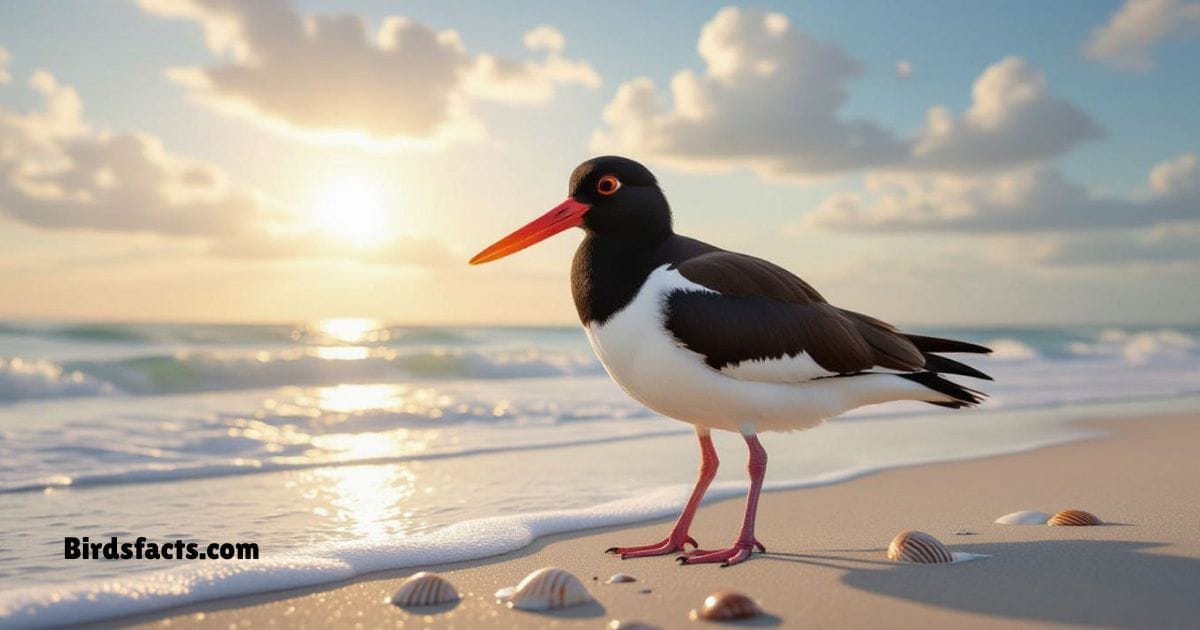
With Its Bold Black-and-white Plumage And Oversized Orange-red Bill, The American Oystercatcher Is A Real Standout Along The Atlantic And Gulf Coasts. Specially Shaped For Prying Open Shellfish, This Long, Strong Beak Is Both Beautiful And Practical. You’re Most Likely To Spot These Birds Striding Across Sandy Beaches, Rocky Shores Or Salt Marshes, Pausing To Dig Up Clams With Impressive Skill.
During Breeding Season, Oystercatchers Become Quite Territorial. They Perform Flashy Courtship Dances And Defend Their Nests Tucked Into Dunes Or Grassy Patches Above The Tide. If You Hear A Loud “wheep!” And Catch A Flash Of Orange, You’re In The Presence Of One Of North America’s Best-known Shorebirds an Essential Member Of The “Birds With Orange Beaks” Family.
Black Oystercatcher

Spotting The Black Oystercatcher Is Like Finding A Hidden Gem Along The Rocky Pacific Coast Of North America. Its Jet-black Feathers Create A Dramatic Contrast With Its Bright Orange Bill a Classic Signature For Identifying This Shorebird Among Crashing Waves And Foam. The Powerful, Straight Bill Is Specialized For Prying Open Limpets And Mussels Anchored To Coastal Rocks.
Black Oystercatchers Are Highly Territorial And Are Often Seen In Pairs Boldly Calling And Flashing Their Beaks As They Defend Their Nesting Spots Their Presence Speaks To The Health Of Rugged Shorelines these Birds Depend On Clean Undisturbed Beaches And A Steady Supply Of Shellfish To Thrive.
Crested Auklet

Crested Auklet
Crested Auklets Look Like Quirky Little Punk Rockers With Their Fancy Head Crests And Dazzling Orange Bills Found Nesting In Large, Noisy Colonies Along Remote Cliffs In Alaska And Northeastern Asia, These Seabirds Use Their Beaks For More Than Just Pecking At Small Marine Invertebrates they Also Play A Role In Social Rituals And Courtship Displays, Puffing Them Out For Maximum Effect.
During Breeding Season, Both The Bill And The Bird’s Crest Become Even More Vibrant, Signaling Readiness To Mate. The Crested Auklet’s Colorful Features And Comical Antics Make Them Favorites Among Birdwatchers On Adventurous Arctic Cruises. If You Ever Hear A Series Of Odd, Honking Calls Echoing Off Sea Cliffs, It’s Probably These Little Characters Showing Off Their Best Orange Style.
Common Blackbird with Yellow Beak

The Common Blackbird Is A Familiar Sight In Gardens And Parks Throughout Europe And Parts Of Asia While .Their Beaks Are Typically Yellow Some Individuals Display An Orange Tint especially Older Well fed Males. This Subtle Variation Can Be A Point Of Fascination For Keen eyed Birders As Sunlight And Diet Can Cause The Bill To Glow With Hints Of Orange Among Glossy Black Feathers.
Aside From Beak Color The Common Blackbird Is Celebrated For Its Melodic Song a Sweet Serenade At Dawn And Dusk. These Adaptable Birds Feed On Worms Insects And Berries Often Hopping About With Heads Tilted To Listen For Food Beneath The Leaf Litter. Their Varied Diet And Can do Attitude Make Them One Of The Most Successful “orange Beaked Birds” In Urban And Rural Landscapes Alike.
Common Myna
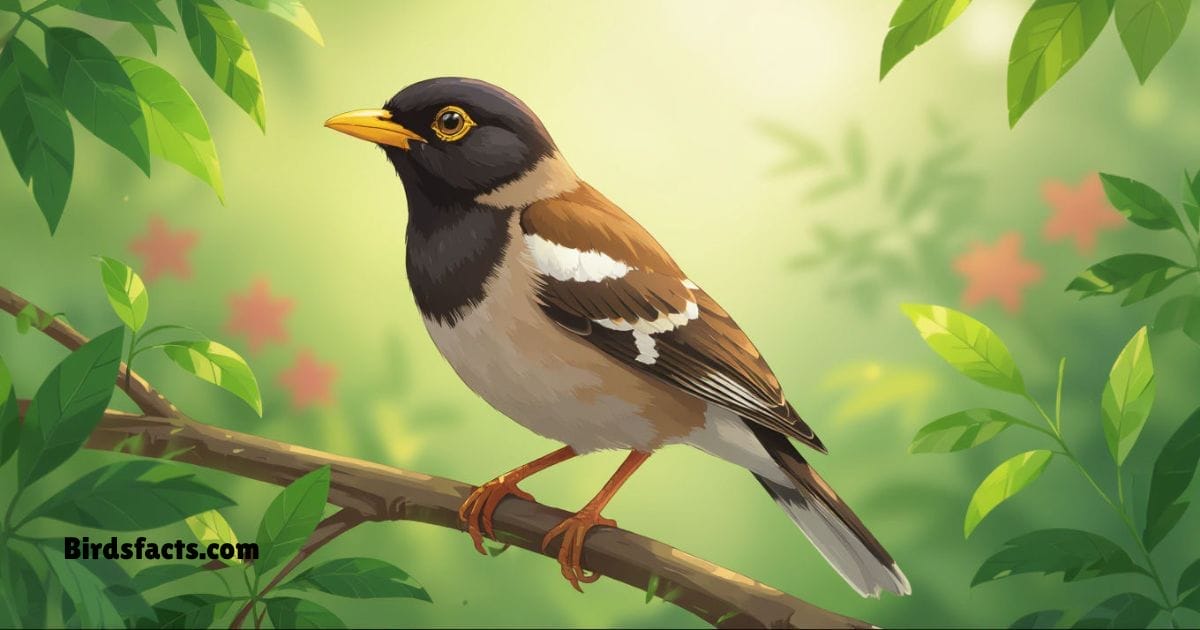
Bold Brash And Highly Adaptable The Common Myna Sports A Yellow orange Bill That Shines As Brightly As Its Personality. Originally Native To South Asia Mynas Have Successfully Colonized Cities Gardens And Agricultural Lands Worldwide often Thanks To Their Loud Calls And Opportunistic Feeding Habits.
These Gregarious Birds Are Social And Clever Sometimes Mimicking Human Speech And Sounds. Their Orange-tinged Bills Help Distinguish Them From Other Starlings, Especially During Noisy Gatherings On Rooftops And Wires. The Common Myna’s Story Of Adaptation And Invasion Offers A Unique Lesson On The Spread Of Introduced Bird Species And The Impact They Can Have On Local Ecosystems.
European Starling

European Starlings With Their Iridescent Purple And Green Plumage Are Famous For Their Swirling “murmurations” At Dusk. During The Breeding Season Their Bills Turn A Sharp Yellow Which Sometimes Appears Tinged With Orange In Certain Light. These Nimble Social Birds Can Adapt To Almost Any Environment From City Parks To Farmlands.
Starlings’ Beak Color Signals Breeding Readiness a Crucial Part Of Their Courtship Display. Watch For These Birds Probing Lawns And Meadows For Insects Their Bills Flashing As They Dig. Despite Being A Common Sight European Starlings Are Anything But Ordinary; Their Clever Foraging Strategies And Dynamic Flocks Have Fascinated Nature Lovers For Centuries.
Greylag Goose

If You’ve Walked Near A Lake Or Marsh In Europe Or Asia, You’ve Likely Encountered The Stately Greylag Goose. These Hefty Waterfowl Feature Pale Gray Feathers And An Impressive, Hefty Beak That Ranges From Pale Orange To Deep Pink. Their Bills Are Not Just Attractive they’re Tough And Useful For Grazing On Grasses Aquatic Plants And Grains.
Greylag Geese Form Tight Family Groups And Are Well known For Their Strong, Lifelong Pair Bonds. In Flight, You’ll See The Orange-pink Beaks Leading Long, Honking V-shaped Formations Across The Sky During Seasonal Migration. The Greylag’s Presence In Wild Wetlands And Even City Parks Is A Testament To The Adaptability Of Orange Beaked Birds Across Continents.
Grey-Headed Gull

If You’ve Walked Near A Lake Or Marsh In Europe Or Asia, You’ve Likely Encountered The Stately Greylag Goose. These Hefty Waterfowl Feature Pale Gray Feathers And An Impressive Hefty Beak That Ranges From Pale Orange To Deep Pink. Their Bills Are Not Just Attractive they’re Tough And Useful For Grazing On Grasses, Aquatic Plants, And Grains.
Greylag Geese Form Tight Family Groups And Are Well-known For Their Strong, Lifelong Pair Bonds. In Flight, You’ll See The Orange-pink Beaks Leading Long, Honking V shaped Formations Across The Sky During Seasonal Migration. The Greylag’s Presence In Wild Wetlands And Even City Parks Is A Testament To The Adaptability Of Birds With Orange Beaks Across Continents.
Hill Myna

The Hill Myna Is Famous Not Just For Its Vibrant Orange yellow Bill But Also For Its Uncanny Ability To Mimic Human Speech. Found In The Forest Canopies Of South And Southeast Asia These Glossy Black Birds Boast Eye catching Yellow Wattles And Robust Curved Beaks That Stand Out Against Their Dark Feathers.
Hill Mynas Use Their Strong Bills To Crack Open Fruit And Seeds Playing A Key Role In Forest Ecosystems By Spreading Plant Life Far And Wide Their Loud Bubbling Calls And Tendency To Gather In Noisy Flocks Make Them A Highlight For Travelers Wandering Through Tropical Forests. The Bright Beak Along With Their Charismatic Voice Ensures They’re Truly Unforgettable
Hornbill
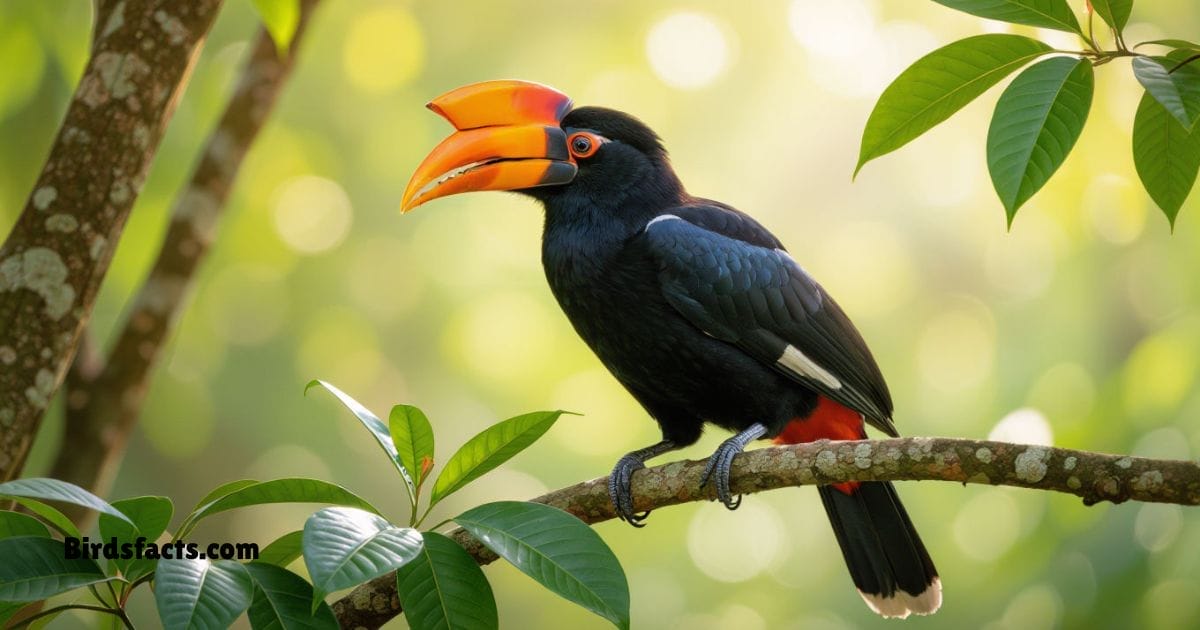
Hornbills Are Among The Most Striking Of All Tropical Birds, Often Sporting Massive, Curved Bills In Wild Shades From Yellow To Orange Species Like The Rhinoceros Hornbill Carry A Prominent Orange Bill Topped With A Casque a Big, Hollow “helmet” That Amplifies Their Calls And Adds Further Drama To Their Appearance.
These Birds Are Native To Forests Across Africa And Southeast Asia Where They Play A Vital Role As Seed Dispersers. Their Large, Boldly colored Bills Help Them Reach Fruit On Branches Too Slender For Heavier Animals .The Sight Of A Hornbill Winging Through The Treetops Sunlight Flashing On Its Orange Beak Is Nothing Short Of Spectacular a Must see For Any Birdwatcher In Tropical Forests.
Mute Swan

There’s Nothing Quite As Elegant As A Mute Swan Gliding Across A Pond, Its Snowy Plumage Glowing In The Sunlight. The Most Striking Detail besides Their Sheer Size And Graceful Necks is The Gleaming Orange Bill, Topped With A Distinctive Black Knob At The Base. This Colorful Bill Isn’t Just For Show it’s A Practical Tool For Grazing Aquatic Plants, Pulling Up Roots, And Preening Feathers.
Mute Swans Often Mate For Life, Returning To The Same Nesting Sites Year After Year. If You’re Lucky Enough To Spot A Pair With Cygnets In Tow, You’ll See How Their Bright Bills Add To The Family’s Regal Presence, Whether In City Parks Or Quiet Rural Lakes Across Europe, Asia, Or Even Parts Of North America.
Malachite Kingfisher

The Malachite Kingfisher Might Be Small, But It’s Packed With Color And Personality! Found Across Sub saharan Africa, This Dazzling Bird Sports Electric Blue And Green Plumage Paired With A Vivid Orange red Bill. Perched Quietly Above A Stream Or River, It Uses Its Brightly Colored Beak As Both Fishing Gear And A Signal To Potential Mates.
Spotting A Malachite Kingfisher Is A Real Treat For Birdwatchers, Thanks To Its Habit Of Darting From One Low Perch To Another With A Quick, Buzzing Flight. When It Dives For Tiny Fish Or Aquatic Insects, That Bold Orange Bill Cuts Through The Water With Precision—a Tiny Hunter Dressed In The Most Brilliant Of Colors.
Northern Cardinal

The Northern Cardinal Is A Familiar Favorite Throughout Much Of North America Males With Their Eye-popping Red Plumage, Are Especially Striking, But It’s The Orange red, Cone-shaped Bill That Truly Sets Them Apart. This Sturdy Beak Is Perfectly Designed For Cracking Seeds A Staple In The Cardinal’s Diet.
You’ll Often See Cardinals Visiting Backyard Feeders especially In Winter When Their Vibrant Coloring Is A Welcome Sight Against Snowy Branches. Both Males And Females Sing Loud Clear Songs And Their Colorful Bills Are A Bold Accent Making Them Easy To Identify Even From A Distance. In Many Cultures Spotting A Cardinal Brings Good Luck And A Touch Of Cheer.
Orange-Billed Sparrow
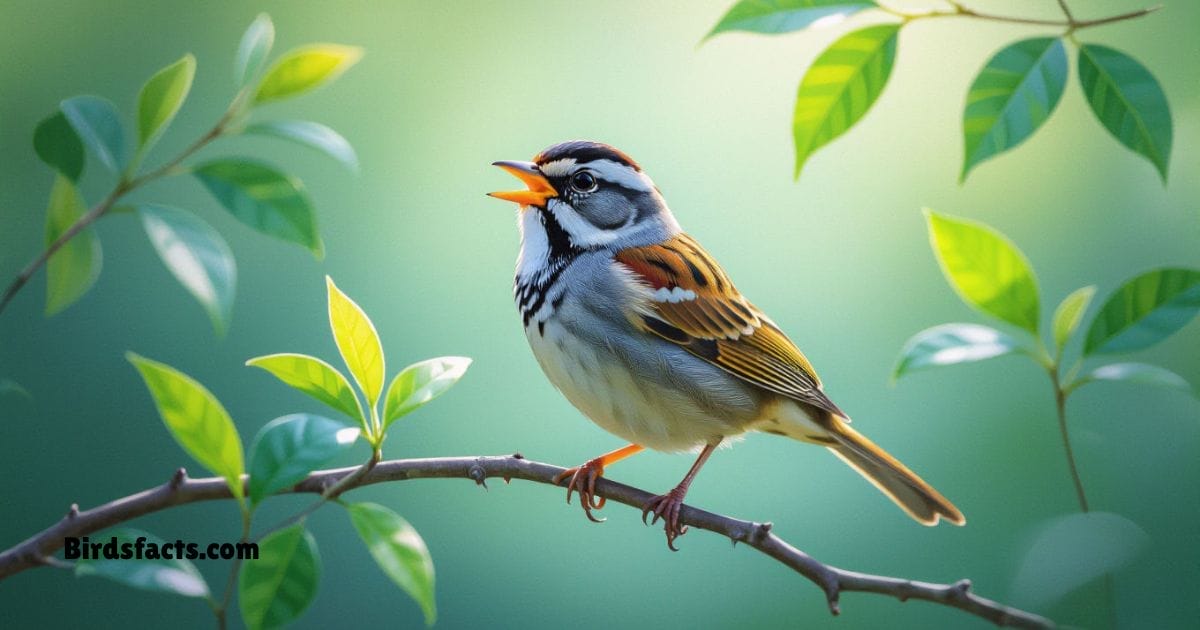
If You Ever Find Yourself Wandering The Humid Forests Of Central Or South America Keep An Eye Out For The Aptly Named Orange billed Sparrow. This Little Bird Sports A Deep Black Body And A Brilliant Orange Beak Which Adds A Pop Of Color To The Dim Forest Floor. Its Bill Stands Out Especially Well In The Dappled Light Making It Easier For Keen Birdwatchers To Spot.
Orange-billed Sparrows Spend Most Of Their Time Hidden Among Thick Vegetation Searching For Seeds And Insects Their Shy Nature Makes Them A Special Find And When The Sunlight Catches Their Orange Bills Just Right It’s Easy To See How They Earned Their Name Among The Most Beautiful Birds With Orange Beak In The Tropics.
Oriental Dwarf Kingfisher

Among The Jewels Of The Asian Rainforests The Oriental Dwarf Kingfisher Stands Out With Its Compact Size And Riot Of Colors. Its Bill Is A Dazzling Bright Orange A Perfect Match For Its Mix Of Purple Yellow And Blue Feathers.This Tiny Energetic Bird Prefers Dense Forest Along Streams Where It Hunts For Insects Frogs And Tiny Fish.
Birdwatchers Who Are Fortunate Enough To Spot The Oriental Dwarf Kingfisher Often Recount The Electrifying Moment As It Zips Through The Shadows its Bill Catching Sunlight Like A Glowing Ember Its Lively Plumage And Bold Beak Have Made It A Sought-after Prize For Photographers On The Lookout For Rare Bird Sightings In Tropical Forests.
Puffin
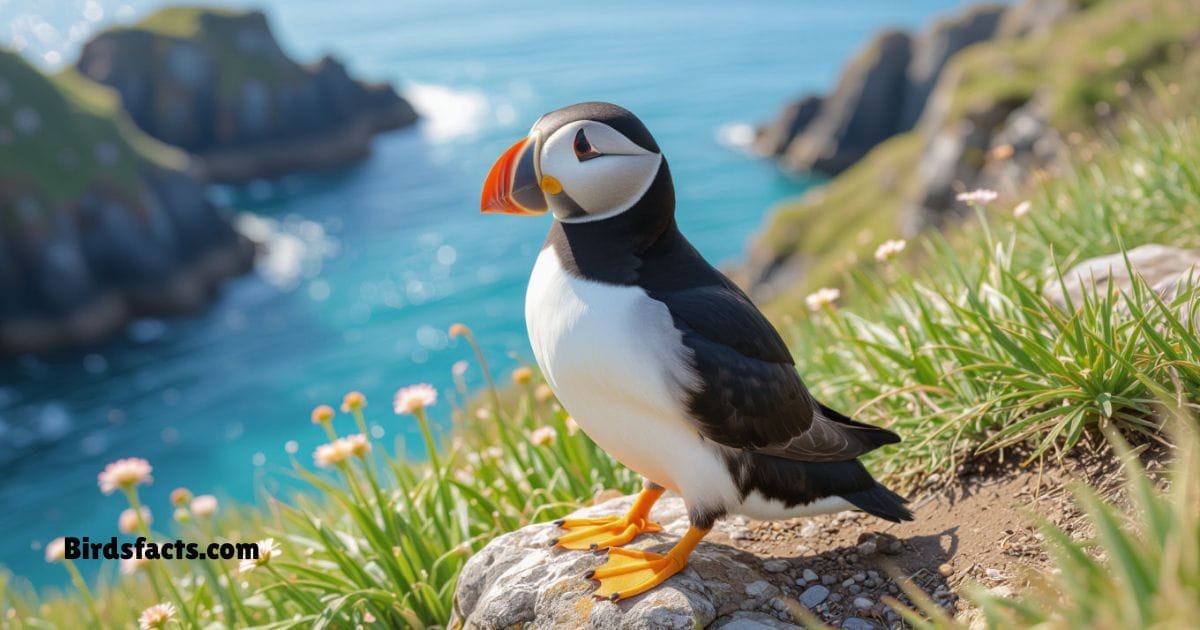
Puffins Are Legendary Among Seabirds For Their Clownish Faces And Unmistakable Orange Bills, Which Become Most Vibrant During The Spring And Summer Breeding Season. Whether You’re Watching Puffins Off The Coast Of Scotland Iceland Or Newfoundland Their Triangular Colorful Beaks Are On Full Display As They Congregate In Huge Colonies Along Sea Cliffs.
Puffins’ Orange Bills Serve A Dual Purpose they Attract Mates And Help With Communication During Complex Social Interactions. These Birds Return To The Same Burrows Each Year Using Their Specialized Bills To Carry Fish For Their Chicks. The Combination Of Black And White Plumage With A Bright Orange Beak Makes Puffins Unforgettable Icons Of Northern Seabird Life.
Pelican

Pelicans Are Among The Largest Birds In The World Famous For Their Huge Often Brilliantly Colored Bills Many Species Such As The Great White Pelican And American White Pelican Develop Intensely Orange Bills And Gular Pouches During The Breeding Season. These Bold Colors Help In Attracting Mates And Signaling Breeding Readiness.
Pelicans Use Their Long Elastic Bills To Scoop Up Fish From The Surface Of Lakes Rivers And Coastal Waters sometimes In Cooperative Groups That Herd Fish Together. Their Striking Appearance And Dramatic Feeding Behaviors Have Inspired Legends And Artwork For Centuries No Wonder Pelicans Are Among The Most Recognizable Birds With Orange Beak On The Planet.
Royal Tern

The Royal Tern Is The Picture Of Elegance As It Cruises Above Sandy Beaches And Coastal Waters. Its Brilliant Orange Bill Is Set Off By A Slender Streamlined Body And Sharp Black Cap Helping You Spot It Even Among Large Flocks Royal Terns Breed In Colonies On Salt Flats And Sandy Islands Depositing Eggs Directly On The Ground In Shallow Scrapes.
Renowned For Their Aerial Fishing Skills Royal Terns Plunge Headfirst Into The Water To Snatch Small Fish Their Orange Bills Flashing With Every Dive. Watching Their Graceful Flights Over Blue Waves Is A Favorite Pastime For Birdwatchers In The Americas Making These Terns A Royal Ambassador Of Orange Beak Beauty.
Toco Toucan

No List Of Birds With Orange Beak Would Be Complete Without The Toco Toucan Whose Enormous Orange-yellow Bill Is As Much An Icon Of South America As The Amazon Itself. Despite Its Size The Bill Is Surprisingly Light, Formed From A Strong But Airy Structure Ideal For Reaching Fruit That Other Birds Cannot.
Toco Toucans Use Their Bills Not Only To Access Distant Morsels But Also For Regulating Temperature And Engaging In Playful Jousts With Fellow Toucans. Their Black-and-white Bodies Electric Blue Eye Rings And Dramatic Beaks Make Them Stars Of The Rainforest Canopy. Every Sighting Feels Like A Page Out Of A Tropical Fairy Tale.
Variable Oystercatcher

Native To The Coasts Of New Zealand The Variable Oystercatcher Stands Out For Its Intense Orange red Bill And Dark Often Variable Body Plumage. These Birds Are Found Along Sandy Beaches Estuaries And Rocky Outcrops Where Their Strong Bills Are Perfect For Prying Open Shellfish.
During Breeding Season Variable Oystercatchers Defend Nesting Territories Fiercely Using Both Their Beaks And Loud Calls. Their Vivid Bills Not Only Aid In Feeding But Serve As Bold Signals To Rivals And Potential Mates If You Are Ever Birdwatching On A Southern Shore Keep An Eye Out For This Emblematic Shorebird.
Yellow-billed Chough
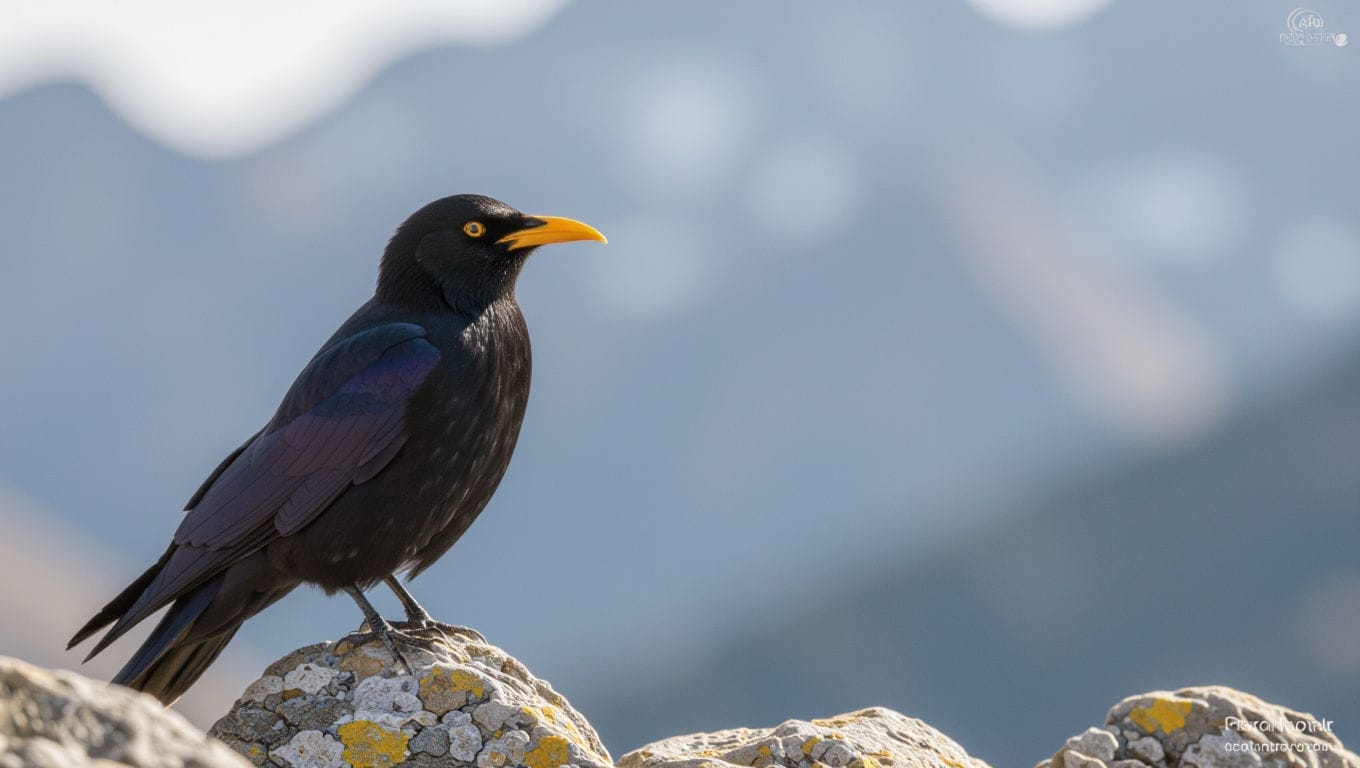
The Yellow billed Chough Or Alpine Chough Is Known For Its Acrobatic Flight Among Europe’s High Mountains. While Its Bill Is Officially Yellow It Often Reveals A Striking Orange Tone In Certain Lighting Especially At Sunrise Or Sunset As The Golden Rays Brush Over The Rocks. This Subtle Color Shift Can Delight Sharp eyed Birders Scanning Alpine Meadows And Crags.
Yellow-billed Choughs Are Social Forming Flocks That Wheel And Swirl Through Cold Thin Air. Their Distinctive Calls Echo Across Valleys As They Forage For Berries Seeds And Invertebrates. When Sunlight Catches Their Bills Just Right It’s Easy To Confuse Them With Other Birds With Orange Beak Above The Treeline.
Zebra Finch – orange bill

Though Tiny In Size The Zebra Finch Boasts A Powerful Presence Thanks To Its Vibrant Orange Bill Particularly In Males. Native To Australia’s Arid Grasslands And Open Woodlands These Birds Are Famed For Their Easy Adaptability And Cheerful Continuous Song. Their Orange Beaks Make Them Instantly Recognizable Against Pale Grey And Chestnut Plumage.
Zebra Finches Have Become One Of The World’s Most Popular Aviary Birds With Scientists Often Studying Them For Insights Into Vocal Learning And Social Behavior. In The Wild, Their Orange Bills Help Attract Mates And Signal Health, While Also Proving Plenty Useful For Cracking Seeds In Some Of Earth’s Toughest Environments.
Frequently Asked Questions (FAQs)
What Is A Black And White Birds With Orange Beak?
Birds Like The Atlantic Puffin American Oystercatcher And Black Skimmer Are Black And White With Bright Orange Beaks.
Why Are Bird Beaks Orange?
The Orange Color Often Comes From Carotenoid Pigments In Their Diet, Which Can Also Signal Health And Breeding Readiness.
What Bird Looks Like A Penguin With An Orange Beak?
The Atlantic Puffin Resembles A Small Penguin But Has A Colorful Orange Beak And Can Fly.
Do Crows Have Orange Beaks?
No, Crows Usually Have Strong Black Beaks, Not Orange.
Which Cardinal Has An Orange Beak?
The Northern Cardinal Has A Bright Orange-red Beak, Especially Vivid In Adults.
Conclusion
From Tropical Rainforests To Frozen Coastlines Birds With Orange Beak Bring Vivid Beauty And Remarkable Diversity To Every Corner Of Our Planet. Their Colorful Bills Do More Than Turn Heads they Play Vital Roles In Survival From Digging Out Shellfish To Dazzling Mates With A Pop Of Pigment. Whether You Spotted A Toco Toucan In The Jungle Canopy Caught A Glimpse Of A Crested Auklet On A Sea Cliff Or Simply Watched A Cardinal At Your Backyard Feeder These Birds Remind Us That Nature Never Runs Out Of Creative Ways To Thrive.
As You Search For These Orange-billed Wonders Remember: Birdwatching Is Not Just About Names And Lists it’s About Those Electric Moments In The Wild When Sunlight Strikes A Flashing Beak And You Experience The Living Tapestry Of Avian Beauty. So Grab Your Binoculars Head For Your Favorite Birdwatching Location And See How Many Spectacular “Birds With Orange Beak” You Can Find. The World’s Skies, Forests, And Waterways Are Richer For Their Presence!
Further Reading
You may also check out:
Thank you for reading!


